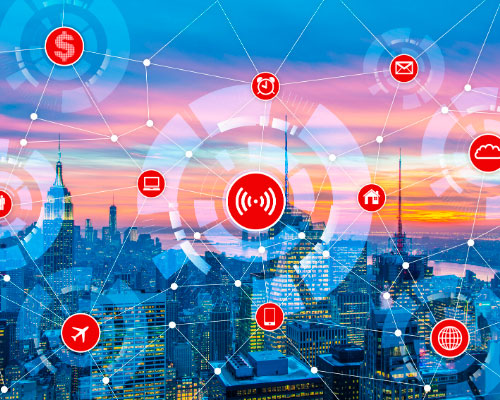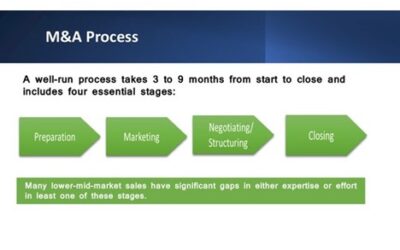While most business cycles ebb and flow, two or three times in a generation we encounter an earth-shattering change that fundamentally reshapes the way we do business. We’re in the eye of the storm – and it’s not one to wait out.
Many refer to the ‘new normal’ as a future reality, yet COVID-19 has had structural impact since its earliest protocols surrounding hygiene and social distancing. They have already transformed the way we do business and it’s only the beginning of a series of ongoing and disruptive changes. So, how are you preparing for the reckoning?
Understanding & Acclimating to the “New Normal”
The supply chain has experienced some instantaneous changes – for both D2C and B2B. While many companies lay off and furlough workers due to sudden shifts, Amazon, Walmart, Domino’s Pizza, and DoorDash can’t hire fast enough. Supermarket chains can’t keep their shelves stocked while retailers have warehouses full of unsold inventory. Campbell Soup had its best quarter in years, Proctor & Gamble had its biggest sales gain in decades, and eBay grew 26% last quarter eclipsing its usual 2% growth rate of gross merchandise volume.
However, now that supply chains are business networks, every impacted link affects the whole ecosystem. Brands experiencing record high demands are still affected by impacted network partners. With less transportation capacity, carriers are forced to hike shipping costs, and airfreight rates from China to Europe were already up 253% YOY in April.
There’s also the issue of sourcing, as companies consider nearshoring and reshoring and requalify and re-assess their suppliers and sub-suppliers. It’s a matter of time before many China-based supply chains shift into Malaysia, Indonesia, Vietnam, and Thailand, or come home.

How Best to Prepare
Meeting these new-world needs and demands means asking the tough questions: Can existing business processes rapidly shift to support your customers and employees working from home? What about handling the mounting avalanche of expected returns, the growing importance of next-day residential delivery, or the move to self-servicing and installation? What about the expectation of near-immediate gratification from customer support services requiring real-time information?
Adapting doesn’t have to be as difficult or cost-prohibitive as many believe. It’s not a call to AI or blockchain or an entire systems replacement.
Adopt technology enablers as fast as you can: Cloud-based technology is the easiest, quickest, and most cost-effective way to rebound from this crisis. Digitizing and centralizing data streamlines remote work and multi-party collaboration. Supply Chain Orchestration platforms are a non-invasive option that offer a wealth of other “new normal” benefits, like helping you scale your omni-channel and e-fulfillment initiatives, differentiate your services, and add reverse logistics and/or service parts management as part of your value chain.
Don’t put all your eggs in one basket: Start establishing other sources now. The companies that are suffering most are those that lack choices. Don’t let yourself get boxed in again; a highly flexible and configurable supply chain platform will not only help you onboard new partners fast, but also enable you to partner with them dynamically. That means always choosing the most optimal parties to work with under any circumstance or challenging conditions.
Automate where possible: With less personal contact and face-to-face meetings, now is the time to adopt intelligent assistants and chatbots for sales order entry and customer service functions, investigate the next generation of tracking and tracing with the “tag of everything,” and other IoT devices. Get rid of as many manual processes as possible to minimize errors, streamline operations, and gain greater agility to change course when disruptions occur.
Do it now! Focus on the biggest and most pressing problems first, while ensuring continuity for your best customers. For supply chains, initiatives should focus on precision, scale, and bandwidth. A rethink on business practices, determining what’s essential and what’s not. For instance, do you really need to offer so many product options or should you concentrate on just your hero SKUs? Wherever you choose to begin, just get to it!

Even for something as cataclysmic as COVID-19, disruption can either be devastating or just stones in the road, depending on the resources you have to meet it. When digitized and hooked to the cloud, you can run your business anytime, anywhere. When your supply chain is running on smart and flexible multi-enterprise business network technology, early-on constraint discovery, dynamic partnering options, and automated solves, you become competitively advantaged. When leveraging a unified and highly configurable supply chain orchestration platform, you have the means to scale and pivot – whether that means adding new channels, becoming omni-channel capable, switching supply, or improving forward and reverse logistics.
If you do the math, these necessary upgrades are a no-brainer. So, start walking the talk, because the “new normal” is already upon us, and the tools you need to thrive in it are time-tested, remarkably easy to use and implement, and incredibly rewarding.



